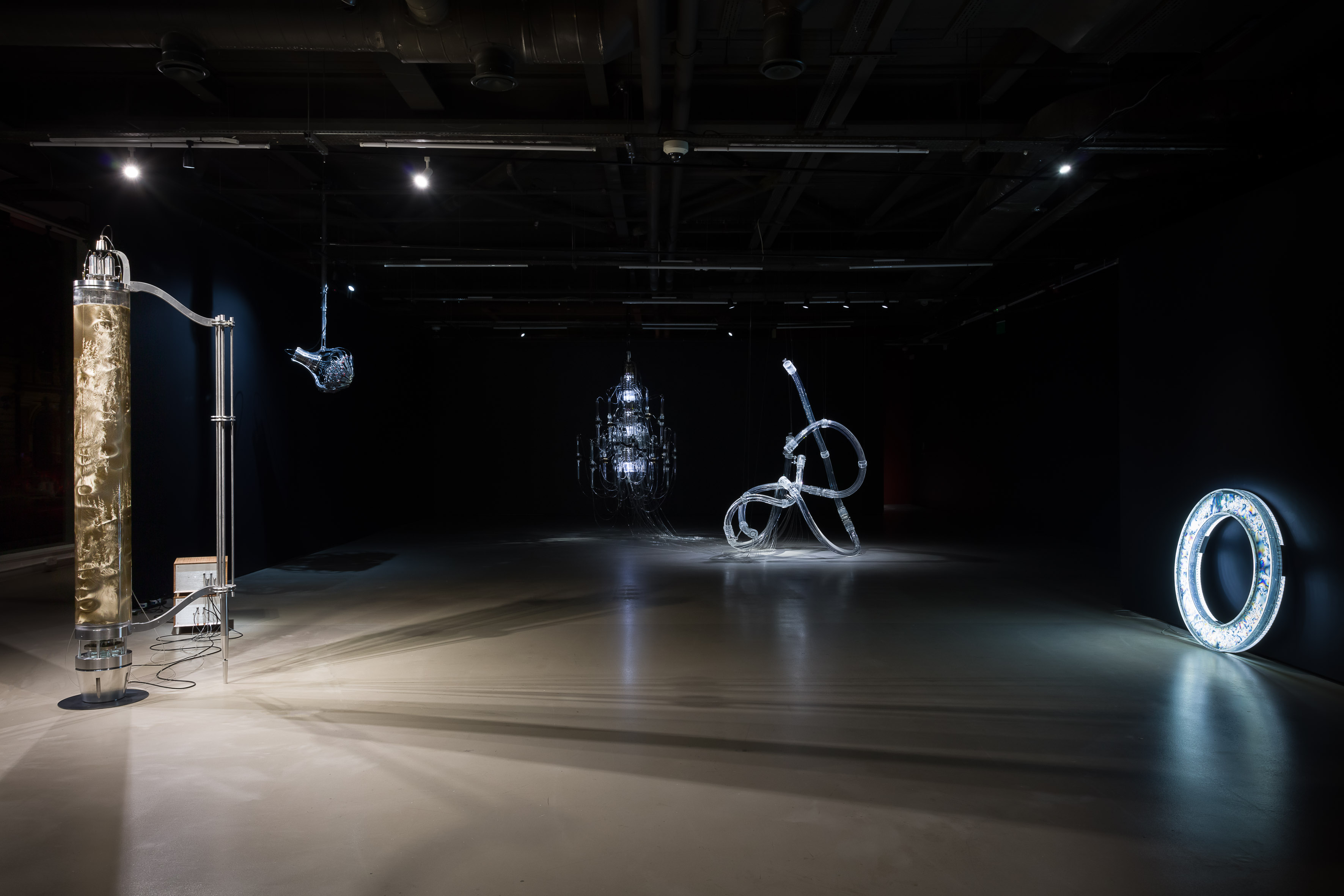Shows
Yunchul Kim’s “Dawns, Mine, Crystal”


The creations of Korean Cultural Centre (KCC) UK’s artist of the year, Yunchul Kim, are most frequently described as merging, or pushing the boundaries of, art and science. Given his use of high tech gadgets and materials such as cosmic ray detectors, unusual polymers and chemical synthesizers, this comes as no surprise. There are plenty of shiny surfaces, lights, clicks, and beeps in “Dawns, Mine, Crystal,” Kim’s first exhibition in the United Kingdom at KCC in London. However, when looking at these works through a purely artistic lens, another potentially more interesting and generative reading can be made.
Why relegate Kim’s creations to the niche and novel domain of “art-meets-science,” when we can consider them rather as an innovative foray into the use of new materials and techniques? “Science” is often defined by its aesthetics and means of creation rather than its true reality. In this context, traditional arts such as ceramics, bronze casting and painting are no less exercises in chemistry than is the pouring of steaming, color-changing liquids in a white-and-chrome laboratory.
For instance, in “Cascade” (2018), a series-work consisting of three other interrelated pieces, we could easily find reflections on nature and its invisible forces, if we stepped away from their complex concepts and arcane technologies—away from the exclusivity and awe conjured by the word “science.” In the work, Argos, a cosmic ray detector comprising 41 channels of glass and chrome Geiger-Müller tubes aimed toward a central point, sends a signal based on its readings to Impulse, an intricate, internally lit, chandelier-like pump system that uses non-pulsating fluid-transfer—more akin to the system of a tree than a heart—to move a transparent liquid into the 18 meters of tubes in Tubular, whose inner, polymer micro tunnels appear and disappear to the eye according to how much liquid is in them. Within these three pieces are discourses on properties of color and visibility not dissimilar from some of our oldest artistic media, and metaphors that allow us to reflect on ourselves and our relation to the world around us: compared to the oscillating steadiness and violence of a human heartbeat, that ceaseless pounding that ends only in death, how might it be to survive by other, stiller, impossible means?
At times, Kim uses these avant-garde materials to serve almost entirely aesthetic ends, practicing artistic appropriation that separates form from function, as in Triaxial Pillars II (2017), a kind of electromagnet in which the artist suspended a mass of photonic crystals in liquid, filling a two-meter acrylic cylinder along with four air-diffusers controlled by solenoids. As the gold-colored crystals are propelled through the liquid, they catch light in coils that compress and extend fluidly, presenting a novel and mesmerizing visual experience. Likewise, in Amorph (2018), which looks like a kaleidoscopic donut, a polymer designed to maximize the propagation of light is used to form a flat ring one meter in diameter. The polymer breaks the bright, white light beneath it much like a prismatic effect of a damaged liquid crystal display, presenting a new way to apply, or create, color on a surface.
In other areas of the exhibition, Kim seems to have deliberately fabricated various “science-y” aesthetics through other means, whether consciously or unconsciously, to engage with a narrative of what science is, and more importantly, what it looks like. Works such as C-Ray (2008), a chemical synthesizer that generates sound through electrochemical reactions—has what might be described as a “retro sci-fi” look, as did parts of other pieces where wood paneling and matt metal surfaces seem to consciously evoke the control-panels of past television shows.

The presence of such a conscious aesthetics is an encouraging sign of what may be to come. If an artist can harness these materials and techniques to create works whose visual properties are related to, but not purely caused by, them, we can perhaps look to a future where such processes become part of an extended artist’s repertoire, capable of creating all manner of works in exciting new ways. After all, bronze casting, ceramics and paint were high-tech once.
Yunchul Kim’s “Dawns, Mine, Crystal” is on view at the Korean Cultural Centre UK, London, until November 3, 2018.







